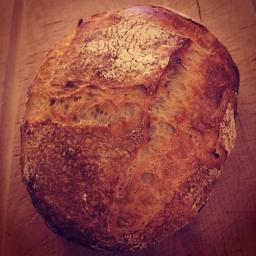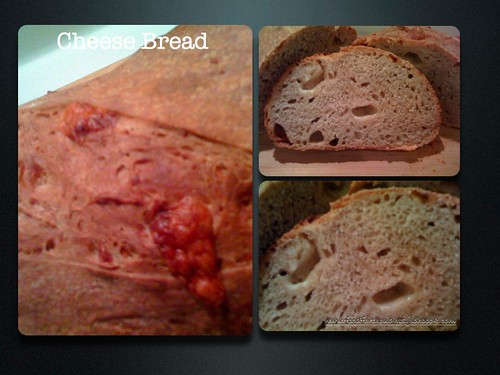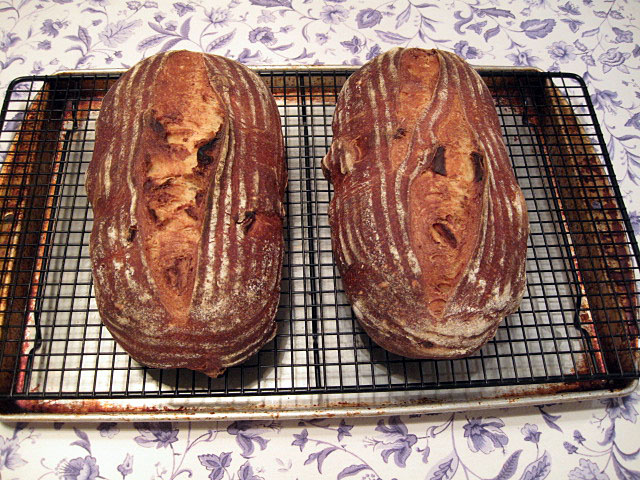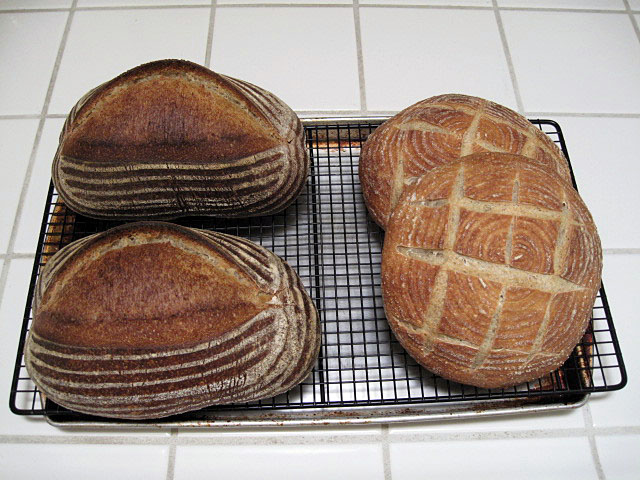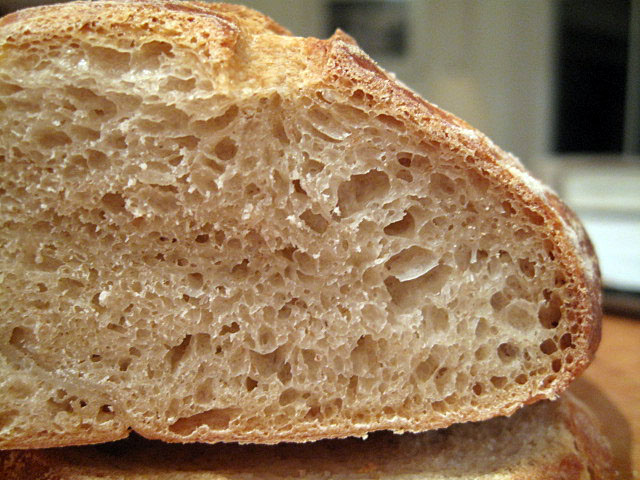
Vermont Sourdough with Increased Whole Grain
I felt like baking something new this weekend, but I like the breads I make most often. That's why I bake them most often. So, I wanted something I would really like as much as those, but different. I settled on the Vermont Sourdough with Increased Whole Grain from Hamelman's “Bread.”
In the sidebar of this recipe, Hamelman talks about the “two small changes” in this formula compared to the “regular” Vermont Sourdough resulting in “surprisingly large” effects. The two changes are an increase in the whole grain flour from 10 to 15% and in the pre-fermented flour from 15 to 20%. These changes result in “a sharper tang and more or a whole-grain taste.” Well, that sounded terrific.
Then, I recalled the errata sheet for “Bread” that Paul (rainbowz) got from Jeff Hamelman and shared with us. I consulted it and found that the corrections decreased the pre-fermented flour which seemed in conflict with the description in the sidebar. Not having a clear sense of how to deal with this discrepancy, I ended up using the ingredient amounts as printed, resulting in a larger batch of dough than that printed in the book.
The Vermont Sourdough with Additional Whole Grain was made with KAF Bread Flour and 15% KAF Medium Rye Flour. It had 20% pre-fermented flour in the form of a 125% hydration starter fed with a mix of 70% AP, 20% WW and 10% whole rye flour. The total dough was 65% hydration. The loaves were scaled to 810 gms and shaped as boules.
The oven was pre-heated to 500ºF on convection bake for 60 minutes, with a baking stone on the middle shelf, pushed to the left, and a 7 inch cast iron skillet filled with lava rocks at the right front of the lower shelf. The oven was pre-steamed by pouring about 1/3 cup of boiling water over the lava rocks. The loaves were then transferred to a peel, scored and loaded onto the stone. Another ½ cup of water was poured over the lava rocks and the oven door quickly closed. The oven was immediately turned down to 460ºF, conventional bake. The skillet was removed after 15 minutes, and the oven was re-set to 435ºF, convection bake. The loaves were baked for an additional 25 minutes. Then, the oven was turned off, and the loaves were left on the stone with the oven door ajar for another 7 minutes before being transferred to a cooling rack.
I baked this bread as part of an experiment to see if I could reliably produce a crackly crust. My results were most satisfactory. (See Consistent Crackly Crust Conundrum Conquered?)

Crackly Crust
The crumb was fully aerated but without huge holes - good for a 65% hydration sourdough.


The crust was crunchy with a caramel-like nutty sweetness. The crumb was tender-chewy. The flavor had both a sweetness and a moderately assertive sourness. This is a bread that is quite sour, but there is a lot of complexity that also comes through. I'll have to make it again, but based on today's bake, I prefer it to the "regular" Vermont Sourdough.
David
Submitted to YeastSpotting
